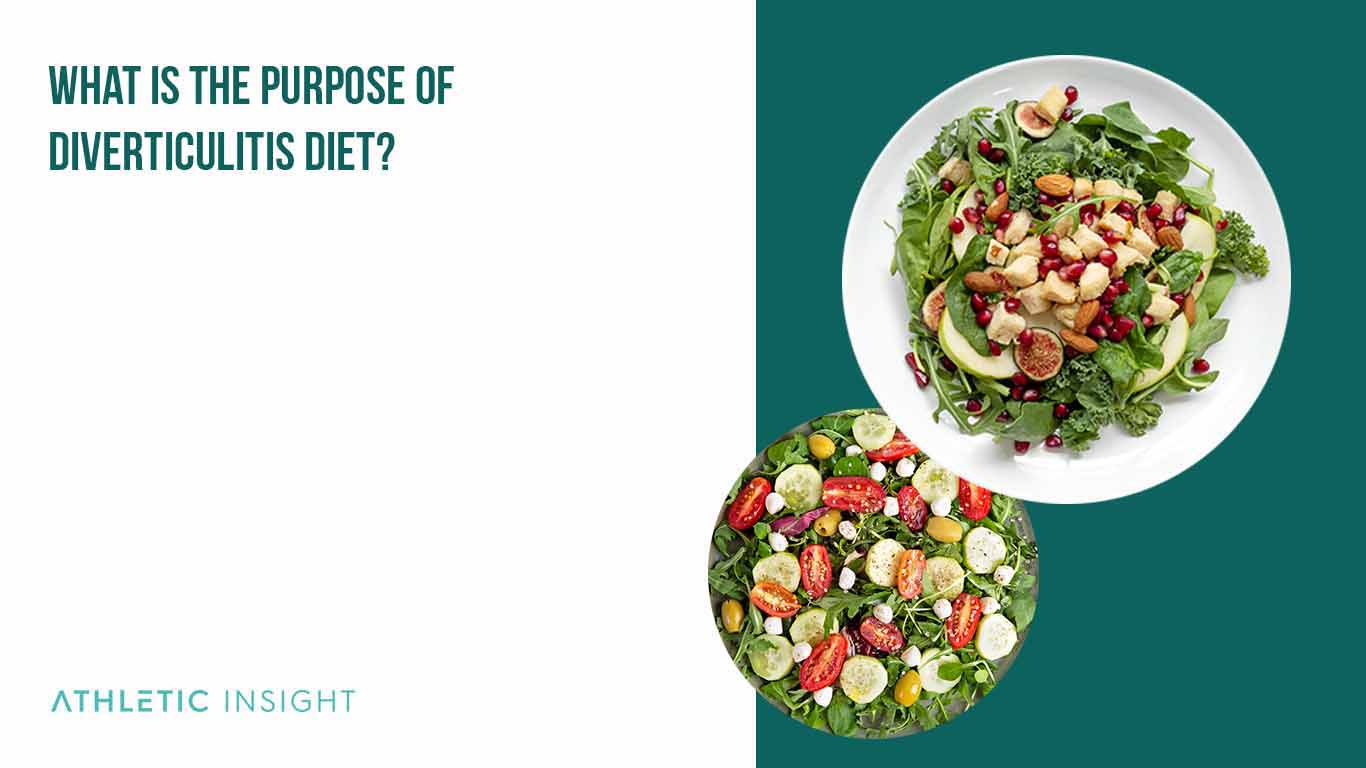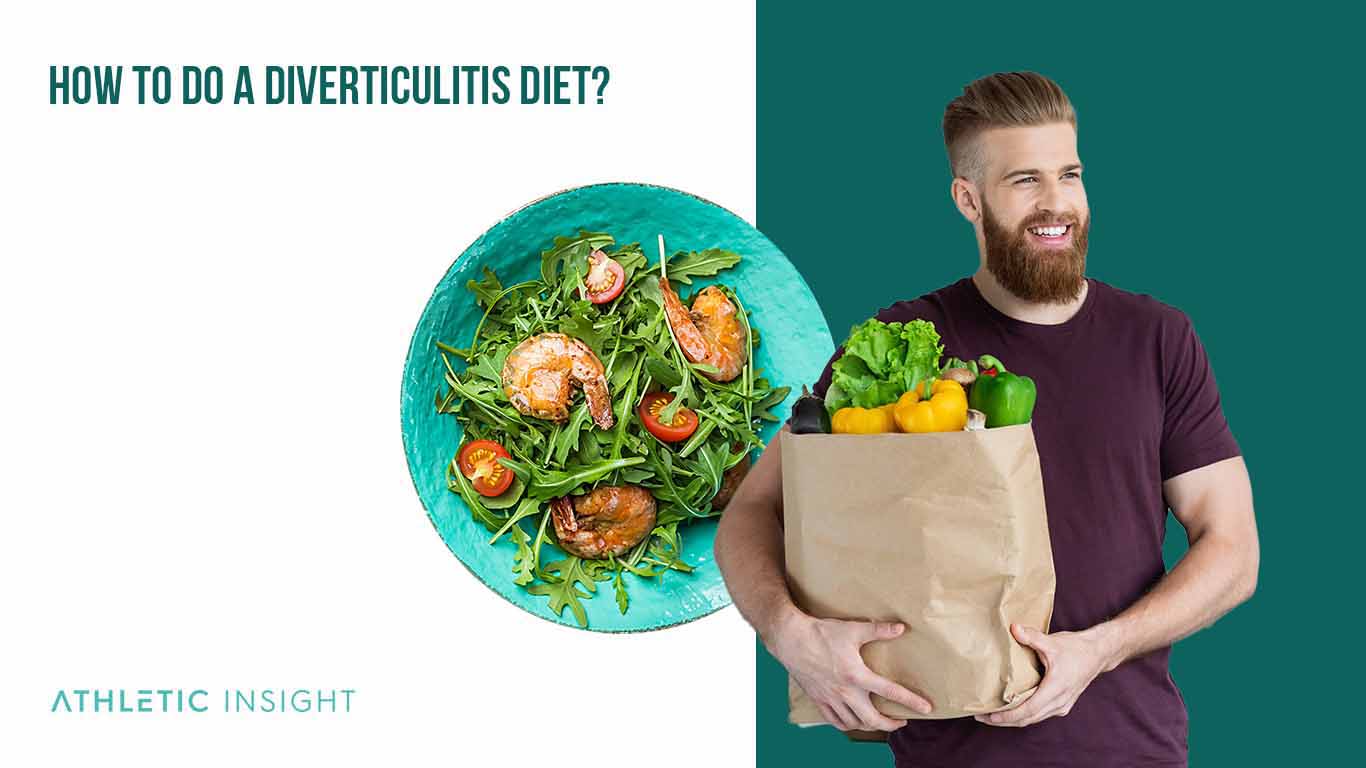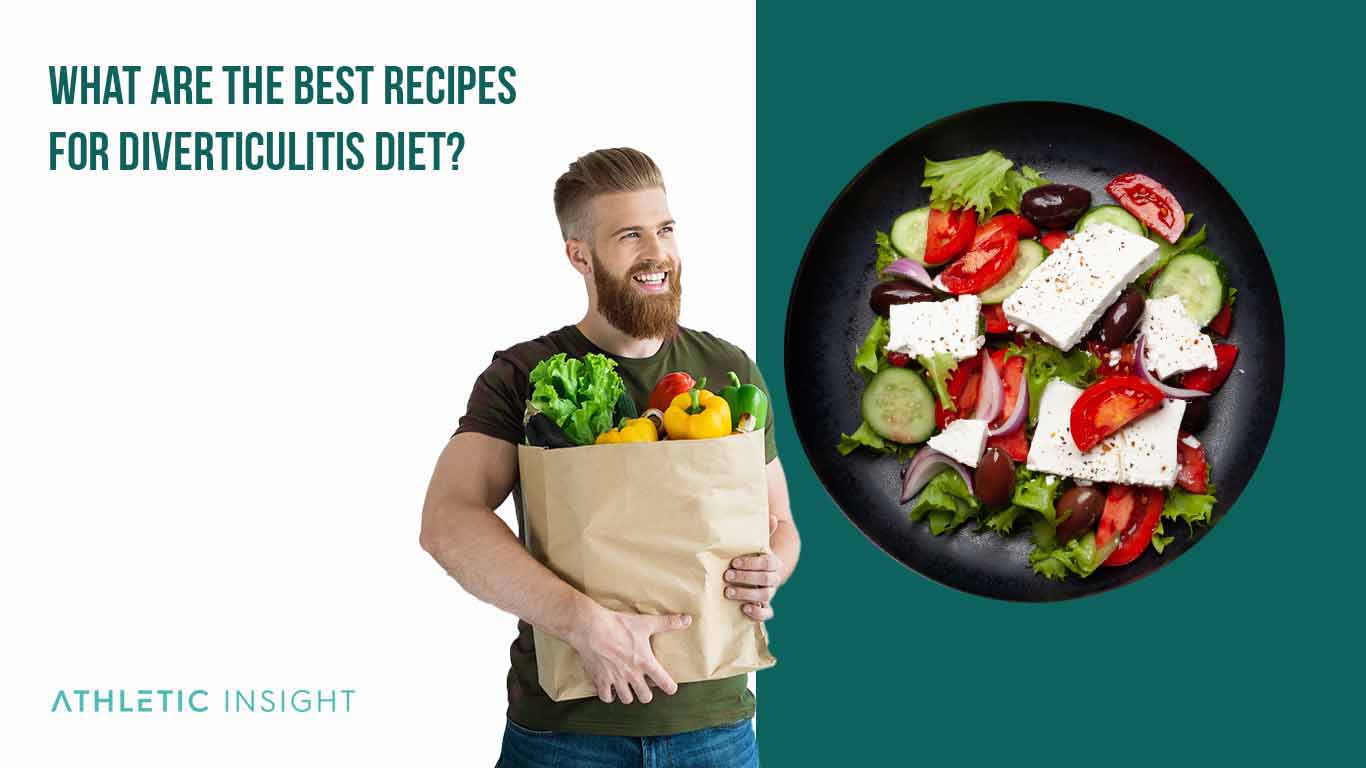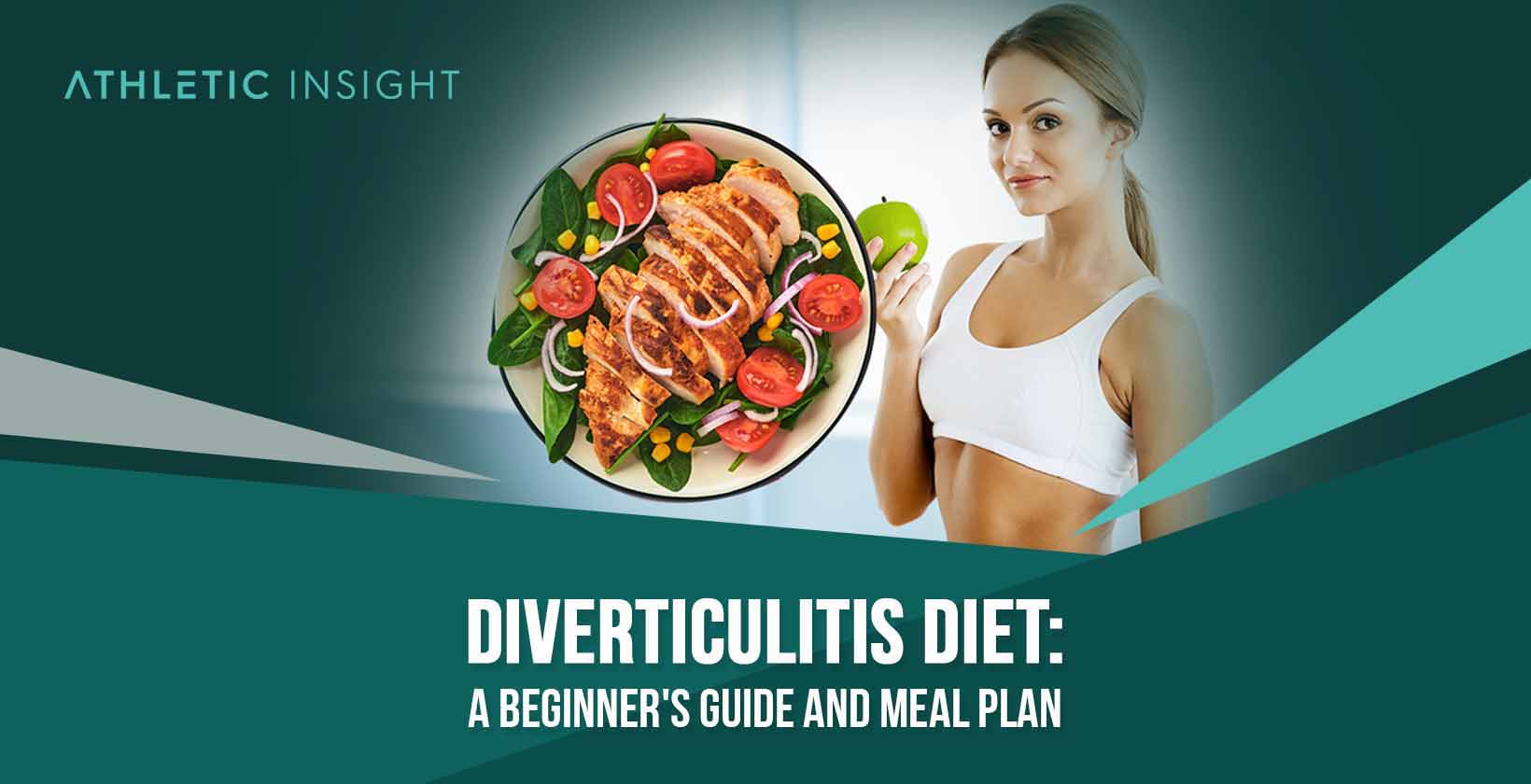When someone has acute diverticulitis, many doctors suggest that they follow a diverticulitis diet for a short time. A diverticulitis diet is a particular eating plan that may be given to treat and prevent infection and inflammation of the colon’s inner lining.
A diverticulitis diet, which is one of the best diets for health, can help lower the risk of inflammation in the digestive tract and treat its symptoms if they happen. The most popular diets to treat diverticulitis include the clear liquid diet, BRAT, and a low-fiber diet. The difference between each involves adding easily digestible liquids, foods, and fiber.
Each of these diet plans exists as part of a diverticulitis treatment plan, and they can be used to manage the symptoms of diverticulitis and prevent flare-ups. The following is an overview of what it means to have diverticulitis and a sample meal plan for people recovering from this condition.
What Is the Purpose of Diverticulitis Diet?
In cases of diverticulitis, nutritional treatment is used as a stopgap to give the digestive tract a break. A low-fiber diet and antibiotics are standard treatments for mild instances of diverticulitis.

Some doctors recommend resting without eating for a while, transitioning to clear liquids, and finally, a low-fiber diet until the patient’s condition improves. Hospitalization is usually necessary for more severe instances.
Consuming a low-calorie diet continues until the bleeding and diarrhea stop. A diverticulitis diet initially reduces the frequency of bowel movements, giving the digestive system a chance to rest and heal.
What Are the Health Benefits of the Diverticulitis Diet?
The health benefits of a diverticulitis diet include a reduction in pain, inflammation, and infection in the colon. A liquid diet for diverticulitis may also help decrease the risk of developing additional health issues. The following are examples of the health benefits provided by the diverticulitis diet.
- Good for Heart Health: A diverticulitis diet may help lower the risk of heart disease since it can reduce the fat content in the diet, leading to lower cholesterol levels.
- Reduces Cancer Risk: A high-fiber, low-fat diverticulitis diet may help reduce the risk of developing certain types of cancer, including colon and rectal cancers.
- Prevents Type 2 Diabetes: A low-sugar, high-fiber diet can also help control blood sugar levels and reduce the risk of developing Type 2 Diabetes.
- Lowers Blood Pressure: In addition to lowering blood pressure, improving cholesterol, and regulating blood sugar, a diet high in fiber can help with weight loss.
- Decreases Asthma Symptoms: The “gut-lung axis” connects the gut microbiome and the lungs. The anti-inflammatory effects of a diverticulitis diet can positively affect asthma symptoms.
- Promotes Bone Health: A diverticulitis diet, including bone broth, promotes bone health by adding nutrients and vitamins like iron, vitamin A, and zinc, improving gut health and strengthening bones.
Eating a diverticulitis diet for weight loss helps with satiety, thanks to the inclusion of low-fat meats and increased fiber.
What Are the Health Risks of the Diverticulitis Diet?
Dietary treatment for diverticulitis is generally safe. Because the diverticulitis diet transitions from liquids to easily digestible foods and then low-fiber foods, patients may suffer from constipation. This is a common side effect of the diet, which can be managed by drinking plenty of water and adding fiber back into the diet gradually.
In some instances, followers of the diverticulitis diet may have an increased risk of stoke or report hair loss.
How To Do a Diverticulitis Diet?
The Mayo Clinic diverticulitis diet helps reduce pressure on the colon, which may reduce pain and bleeding. Here are 4 steps to follow when doing a diverticulitis diet.

- Pause Digestion: First, a diverticulitis diet helps reduce inflammation in the digestive tract by reducing or eliminating solid foods. Doctors may prescribe IV fluids and antibiotics.
- Introduce a Liquid Diet: After a period of rest from solid foods, drinking clear liquids helps to rehydrate the body and start to recover from possible dehydration. Clear liquids include the following water, ice chips and ice pops, fresh fruit juices without pulp (apple or pear juice), sports drinks, gelatin, and broths made with chicken or beef.
- Add Bland Foods: A BRAT diet introduces bland foods like bananas, rice, applesauce, and toast to increase the patient’s caloric intake and provide more nutrients. BRAT is intended to be a short-term plan that can help reduce the severity of symptoms while encouraging the digestive system to heal itself. Foods on the BRAT diet are lacking in protein, fat, and fiber. Therefore, they will not provide enough nourishment to aid in the recovery of a compromised digestive system.
- Include Low-Fiber Foods: After a few days of clear liquids and a BRAT diet, begin to add low-fiber foods such as plain pasta, potatoes, and crackers back into the diet.
Clear liquids are all that can be consumed during the outset of the diverticulitis diet, which means that calorie intake will be low. Once solid foods are reintroduced, at least 1500 calories should be consumed daily.
Depending on the severity of the symptoms, a diverticulitis diet may need to be followed for anywhere from three days to several weeks. Following a diverticulitis diet means eating small meals throughout the day, drinking plenty of water, and including high-fiber foods once acute symptoms have subsided.
What Are Diet Tips for Preventing Diverticulitis?
Beyond the diverticulitis clear liquid diet, the following tips can aid in preventing the condition.
- Eat a high-fiber diet
- Keep drinking 6 to 8 glasses of water every day
- Start an exercise program
- Treat diarrhea with a bland diet
- Watch for changes in bowel movements
- Prevent constipation with fiber and add a stool softener if needed
- Get plenty of rest and sleep.
What Are the Foods That You Can Eat While on a Diverticulitis Diet?
Treatment for acute diverticulitis involves the restriction of food and only clear liquids. However, once acute symptoms have passed, a broad range of foods can be part of a diet plan.
- Fruits: Pears, peaches, and applesauce
- Vegetables: Green beans, carrots, and potatoes
- Grains: Whole wheat bread, bran, and oatmeal
- Legumes: Lentils, navy beans, and kidney beans
- Nuts: Almonds and cashews
- Seeds: Pumpkin and sesame seeds
- Healthy fats: Avocado and olive oil
- Proteins: Shredded chicken, baked fish, lean ground beef
The diverticulitis diet food list includes whole foods like pumpkin seeds, lentils, and green beans, which are rich in fiber and low in fat and sugar. Healthy fats like olive oil and protein in chicken or lean ground beef can help with satiety.
A low-fiber diet can treat diverticulitis during a flare-up of painful symptoms. The following types of foods are particularly beneficial as part of a diverticulitis diet.
What Are the Foods That You Should Avoid While on a Diverticulitis Diet?
When searching for the best diet for diverticulitis, there are some foods to avoid so that a healthy diet can still be enjoyed.
- Meat: Red meat and processed meats
- Poultry: Duck and goose
- Fish and shellfish: Fried fish
- Meat-based ingredients: Hot dogs, sausages, and bacon
- Eggs: Whole chicken eggs
- Dairy products: Full-fat milk, yogurt, and ice cream
These foods cause inflammation and should be avoided because they are high in fat and low in fiber. Dairy products can irritate the lining of the intestines, which can also worsen symptoms. Eggs are high in cholesterol and restrict fiber intake, contributing to constipation.
Meat-based ingredients such as hot dogs, sausages, and bacon are high in saturated fats, which increase the risk of heart disease due to their high sodium content. Instead of including these foods in a diet plan, replace them with high-fiber, low-fat foods that aid digestion.
Who Should Do a Diverticulitis Diet?
Individuals with an acute diverticulitis flare-up may respond to a diverticulitis diet, which is a low-fiber or clear liquid diet, depending on its severity. For anyone diagnosed with diverticulosis but who isn’t currently experiencing an episode of diverticulitis, a high-fiber diet can help avoid future flare-ups.
Those with digestive disorders like IBS, ulcerative colitis, or Crohn’s disease may benefit from a diverticulitis diet. Following a diverticulitis bodybuilding diet can be helpful for those who are trying to lose weight and build muscle. Diabetic people may also benefit from a diverticulitis diet, as it can help them manage their blood sugar levels.
What Are the Best Recipes for Diverticulitis Diet?
After changing their diet, many wonder, “When can I return to a normal diet after diverticulitis?” Variety in meals keeps people interested, and plenty of recipes like the following will help.

- Pumpkin Pie Oatmeal: Pumpkin pie spice makes this breakfast practically desert, but it’s relatively healthy thanks to its high fiber content.
- Lentil Tomato Salad: Put together a delicious and filling lentil salad with caramelized onions and tomatoes.
- Grilled Vegetable Quesadilla: Mozzarella cheese melts over a bed of grilled vegetables like zucchini, squash, red pepper, and mushrooms for a satisfying quesadilla high in fiber.
- Baked Sweet Potato Fries: These tasty fries are a great alternative to fatty fast food.
- Baked Artichoke Dip: A warm, flavorful dip that can be made in advance and is simple to prepare.
What Is a Sample Diverticulitis Diet Plan?
A sample diverticulitis diet plan may include a variety of foods that are easy on the digestive system. The following represents a week-long sample meal plan.
Day 1
- Breakfast: Whole wheat toast with smoked salmon and cottage cheese
- Lunch: Grilled shrimp and bean salad
- Dinner: Tuna cakes and mashed potatoes
Day 2
- Breakfast: 1 cup of oatmeal and 1 can of peaches
- Lunch: Brown rice Greek salad
- Dinner: Grilled veggie sandwich
Day 3
- Breakfast: 2 eggs on plain toast
- Lunch: Chicken pasta salad
- Dinner: Chipotle back bean chili
Day 4
- Breakfast: Banana breakfast smoothie
- Lunch: Creamy squash soup
- Dinner: Beef and penne pasta
Day 5
- Breakfast: Banana bran muffins
- Lunch: Split pea soup
- Dinner: Spinach and ham pizza
Day 6
- Breakfast: Multigrain pancakes
- Lunch: Asian chicken salad
- Dinner: Spaghetti with zucchini
Day 7
- Breakfast: Asparagus and bean frittata
- Lunch: Mushroom barley soup
- Dinner: Broccoli and potato casserole
What Are the Facts About the Diverticulitis Diet?
Those with diverticulosis, or the bulges in the colon’s wall, also benefit from high-fiber diets. Five facts about the diverticulitis diet include the following.
- Nutrition therapy is an integral part of the treatment plan for diverticulitis.
- Diverticulitis diets are short-term solutions designed to give the digestive tract a break.
- Maintaining a diverticulitis diet requires a more calorically dense food plan than the low-calorie, clear fluid diet for acute symptoms.
- A diverticulitis diet encourages a high-fiber diet to promote regular bowel movements and reduce the risk of constipation.
- Diverticulitis diets are often low in fat and high in protein.
What Are the Causes of Diverticulitis?
Diverticulitis is painful when small pouches (called diverticula) in the digestive tract lining become inflamed or infected. An infection may arise if a piece of solid feces or undigested food becomes lodged in one of the pockets, and bacteria have a chance to grow and spread.
What Are the Complications of Diverticulitis?
Complications of diverticulitis include hemorrhage, abscesses, intestinal blockages, urinary problems, and fistulas.
- Hemorrhage
- Abscesses
- Intestinal blockages
- Urinary problems
- Fistulas
Does a Diverticulitis diet work?
Yes. there is substantial evidence linking a high-fiber diverticulitis diet to a decreased risk of developing diverticulitis. A diverticulitis diet is effective in treating mild instances.
What Is the Difference Between Diverticulitis and Diverticulosis?
Diverticulosis is the presence of one or more diverticula or bulges in the colon wall. Diverticulitis is the inflammation and infection of those diverticula. The signs and symptoms of acute diverticulitis include pain, fever, vomiting, constipation, and pain in the lower left abdomen.
Is a Diverticulitis Diet Considered a Healthy Diet?
Yes, a diverticulitis diet is considered healthy because it’s rich in fiber and low in fat.
Is a Diverticulitis Diet Expensive?
No, the Diverticulitis diet is not expensive. In general, high-fiber fruits and vegetables that are in season may be purchased for a reasonable price. Rice and pasta, two staples of the diverticulitis diet, may be bought in large quantities at wholesale costs.



